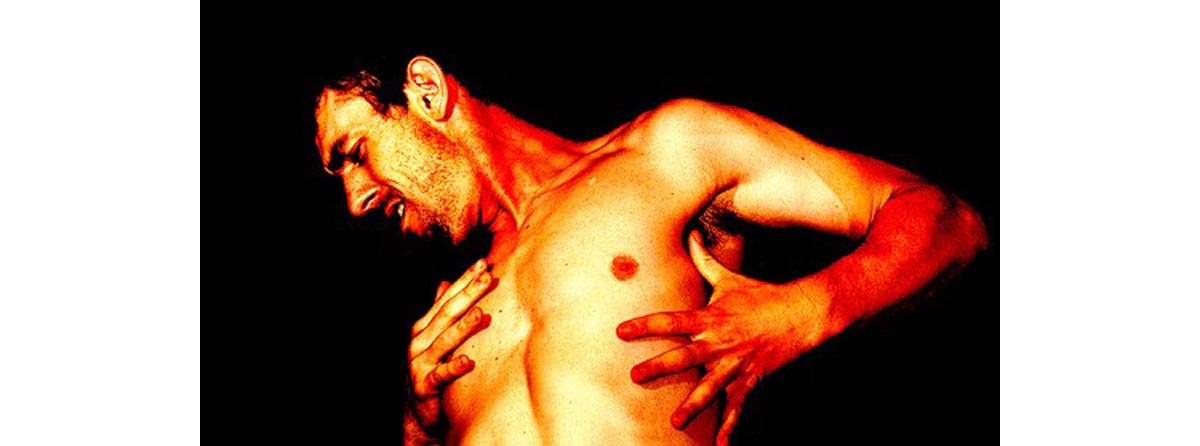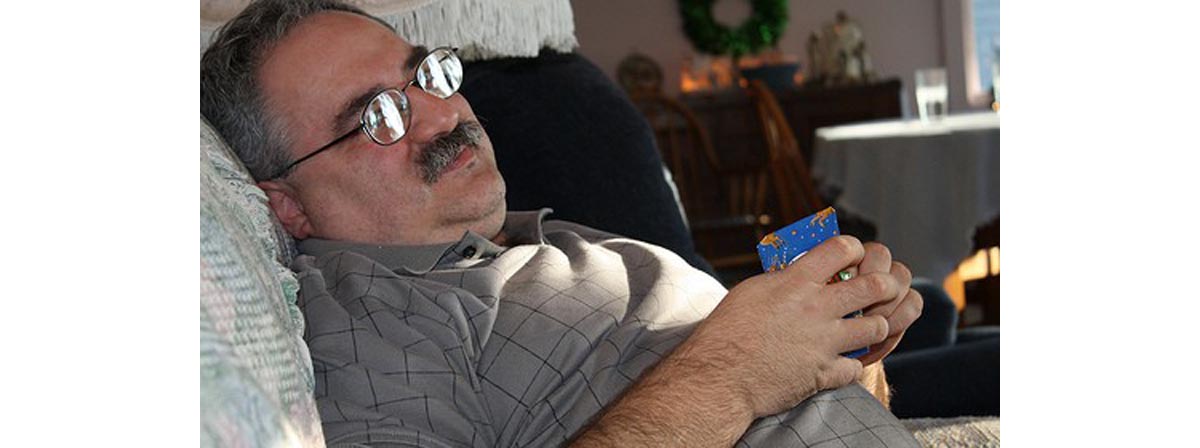Strokes are survivable. I should know. I've had four. I'm a walking medical miracle.
But medical miracles tend to happen to people who are prepared to make the most of both medical care and self-care, and who have lots and lots of support both in and out of the hospital. Please read these 10 essential facts about stroke just in case you find yourself needing to take care of someone who has had a stroke, or you find yourself having a stroke — as about 29 percent of people will, sooner or later.

Please share this article with people you know just in case they need to know more about how to help you.
1. Just about anyone can have a stroke.
In the United States alone, 700 thousand people per year suffer a first-time stroke. Not all of them are older adults, contrary to popular belief. About one third of people who have strokes are under the age of 65. About one third of people who have a first-time stroke will die as a result.
In senior citizens and in under-65's alike, stroke is commonly associated with vascular disease, especially high blood pressure. Strokes are also associated with high LDL cholesterol and smoking.
However, it is important to be on the lookout for the symptoms of stroke in people who:
- Recently started certain kinds of antipsychotic medications, especially risperidone (Risperdal) and olanzapine (Zyprexa) and closely related drugs, and especially during the first two weeks of use.
- Overdose on amphetamines, ecstasy, molly, or PCP.
- Recently had a heart attack or had a stent procedure to open a coronary artery, causing debris to travel to the brain.
- Recently started a blood thinning drug (in my case it was Brilinta, which is also known as ticagrelor), loosening up a clot in the brain and causing a hemorrhagic stroke.
- Suffer extreme hypotension (low blood pressure) after loss of blood or dehydration or other causes, at "watershed" location in an artery some distance from the brain. A clot travels from the "watershed" to the brain over a period of minutes, hours, days, or weeks.
It isn't just high blood pressure or high cholesterol or smoking that causes a stroke. Lots of people who "have been sick lately" are at increased risk of stroke. In young adults, strep infections (which cause blood to coagulate), use of oral contraceptive pills (in women), dehydration, fever, migraine headaches, cocaine abuse, and broken bones most often precede stroke.
So how can you tell when someone may be having a stroke?
Get emergency help fast when the person is displaying:
- Sudden loss of motion or sensation, especially if the debility is limited to one side of the body.
- Sudden loss of the ability to speak, or to understand speech.
- Sudden loss of sight, hearing, smell, taste, or touch.
- Sudden changes in personality that don't seem to be related to events, such as aggression and extreme irritability.
- Sudden dizziness or loss of coordination.
- Sudden loss of decision-making skills not due to alcohol or drug use or severe fatigue.
When there are sudden and severe changes in brain-based abilities, get a doctor to rule out stroke.
2. The symptoms of stroke can be subtle.
Since strokes generally occur on one side of the brain, doctors typically look for symptoms on the other side of the body.
Sometimes mild strokes don't cause paralysis. They might cause loss of speech, loss of sight, dizziness, or general confusion. Someone who seems to be having a really bad day emotionally could be having a mild stroke, and some strokes can even be missed entirely for this reason.
3. Clot-busting therapies usually get good results in mild to moderate strokes if they are started within 90 minutes of the onset of symptoms.
Emergency room physicians can treat ischemic stroke (those are strokes caused by blockages in blood vessels) with anticoagulant therapy if the treatment is started soon enough. The emergency room doctor won't offer the treatment, however, unless someone who can communicate was present when the patient "went down" so that the time from onset of symptoms can be determined. The presence of friends and family members is essential for the doctor to know it is safe to use this kind of therapy when stroke interferes with speech.
Clot-busters are not offered to stroke patients who are already on anticoagulants, such as Coumadin, Plavix, or Brilinta.
More Essentials for Dealing with Stroke
Even when someone has had a "close call" with a stroke, complications can develop.

4. About 25% of stroke patients will suffer one or more seizures as they recover from their strokes.
Only about 2% of people who have strokes go on to develop a seizure disorder, but having one more seizures in the first few weeks after having a stroke is not unusual. Seizures are most common within the first couple of days after surviving a stroke. These, too, can lead to loss of consciousness.
5. Women about 50% more likely to die after strokes than men.
Careful after-care is essential for women who have had strokes. In the United States, about 26% of men die after their first stroke, compared to about 40% of women.
6. Blacks are more likely to have strokes than whites. Hispanics have different kinds of strokes, when compared to non-Hispanic whites.
People of African origin are about 1 and 1/2 times more likely to have strokes than people of European origin. Sickle cell anemia or even the presence of sickle cell traits without the full-blown disease greatly increases a person's risk of suffering from a stroke. Hispanics are no more likely than non-Hispanic whites to have a stroke, but they have strokes at an earlier age and are more likely to have lacunar strokes, strokes that typically cause vague symptoms such as a change in personality or fine muscle skills. These types of strokes can be a challenge to diagnose correctly.
7. Controlling blood sugar levels is essential to limiting the damage caused by a stroke.
High blood sugar levels are associated with:
- Larger areas of brain tissue affected by the stroke,
- Poorer responses to clot-busters used for early treatment of stroke, and
- Higher risk of having a stroke and higher risk of having a second stroke.
If your family member or friend is diabetic, it is extremely important — and relatively rare — that he or she receives adequate blood sugar management while in the hospital. This means he or she will likely have to get more than the single unit of insulin some hospitals offer to claim they treated insulin-dependent diabetes.
In my own case, when I was hospitalized for my third ischemic stroke, the doctor prescribed 140 units of insulin per day and I was given 2. My meal tray was laden with white bread and white rice, which I don't usually eat. Then the nurse was surprised my blood sugar levels were out of control.
8. It's not unusual for the MRI not to show any changes in the brain the first hour, the first day, or even the first week after a stroke.
Brain tissue doesn't die immediately after blood circulation is cut off. Genes that induce inflammation and tissue death may not be activated for several days. Only especially severe strokes show brain changes shortly after presentation.
9. Ischemic strokes often undergo "hemorrhagic transformation" into hemorrhagic strokes.
A blood clot (ischemic stroke) can become a brain bleed (hemorrhagic stroke) over time. This is especially the case in people who are already on blood thinners because they have heart disease or peripheral vascular disease or they have had a heart attack or they have atrial fibrillation.
This means that the treating doctor needs to be asked about whether or not blood thinning drugs should be continued after a stroke. Many doctors are not aware that some of the newer anticoagulant medications, such as Brilinta (taclidprogel) should never be given to someone who has had a stroke.
10. Strokes sometimes cause changes for the better.
It's not at all unusual for a stroke to be followed by a personality change. In my own case, some of the most troubling issues in my life simply disappeared. I remember them, but the circuits in my brain that caused me to relive the emotional pain went away after the third — or was it the fourth — stroke. Or maybe it's just so amazing that I survived four strokes that I don't sweat the small stuff anymore.
Many people aren't so lucky. Still, life after a stroke, or two or three or four strokes, is an adventure. All the changes that happen in life after stroke are not always bad.
- Brooks M. 'Ultra-Early' Thrombolysis Cuts Disability in Mild Stroke. Medscape Medical News [serial online]. Aug 28 2013. Accessed 13 Sep 2013. Available at http://www.medscape.com/viewarticle/810126.
- Strbian D, Ringleb P, Michel P,et al. Ultra-early intravenous stroke thrombolysis: do all patients benefit similarly? Stroke. Aug 22 2013.
- Photo courtesy of David Goehring by Flickr : www.flickr.com/photos/carbonnyc/6157027969/
- Photo courtesy of Matty Farah by Flickr : www.flickr.com/photos/matt1125/3678807410/


Your thoughts on this